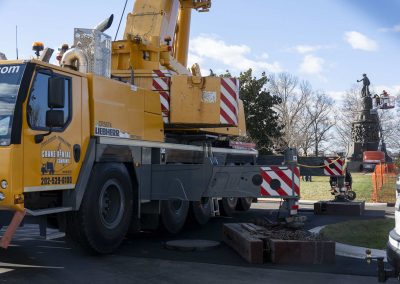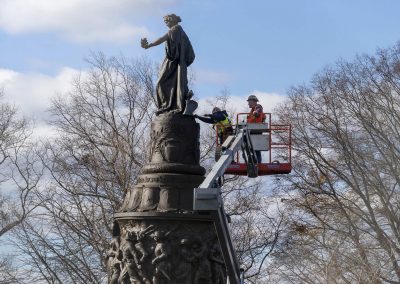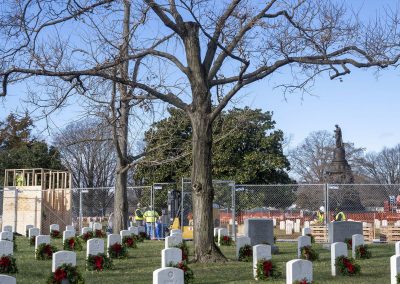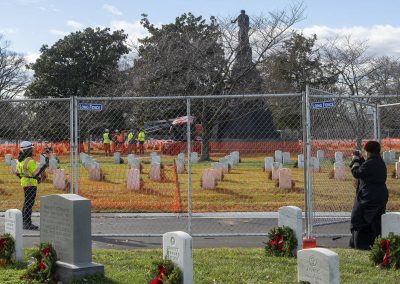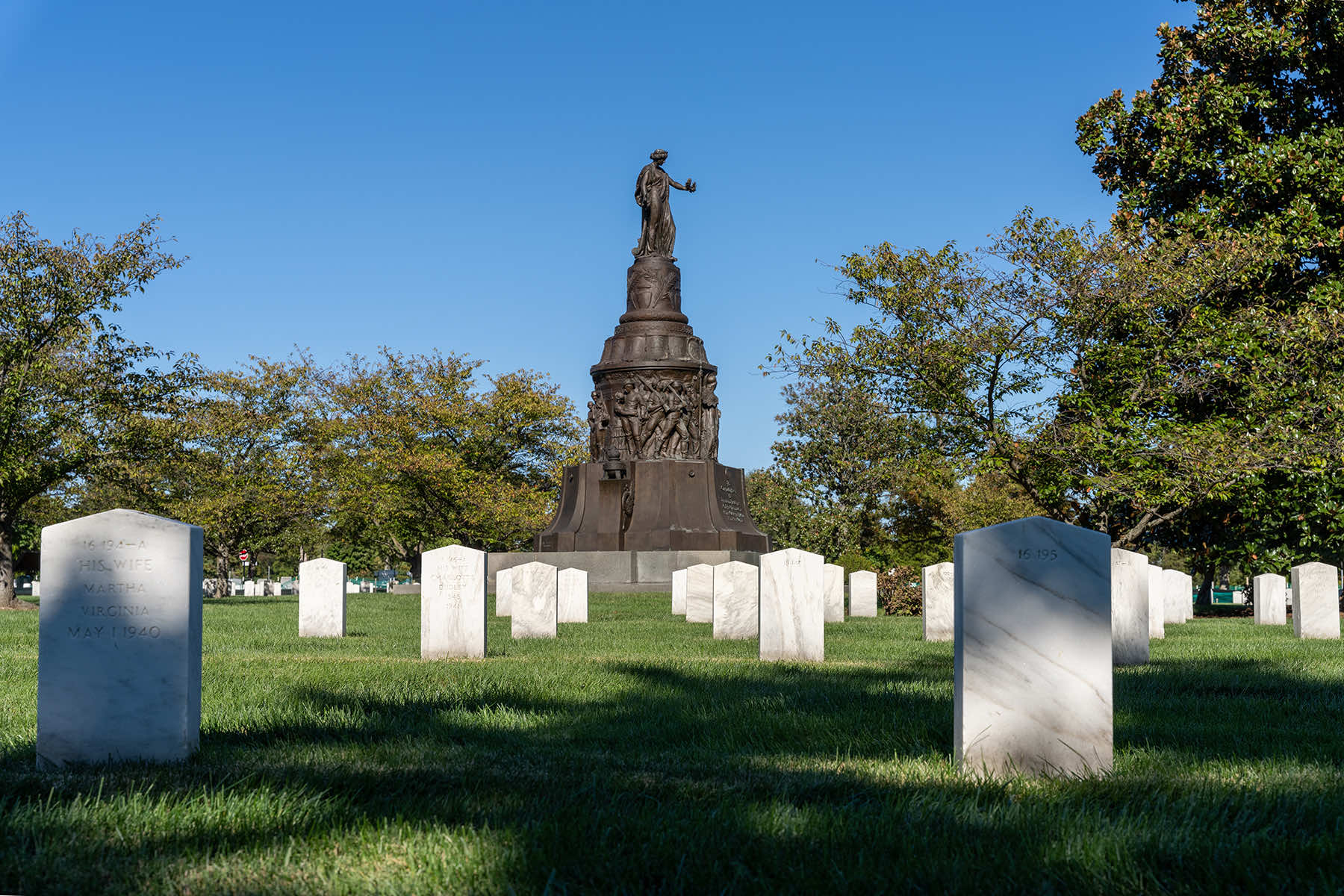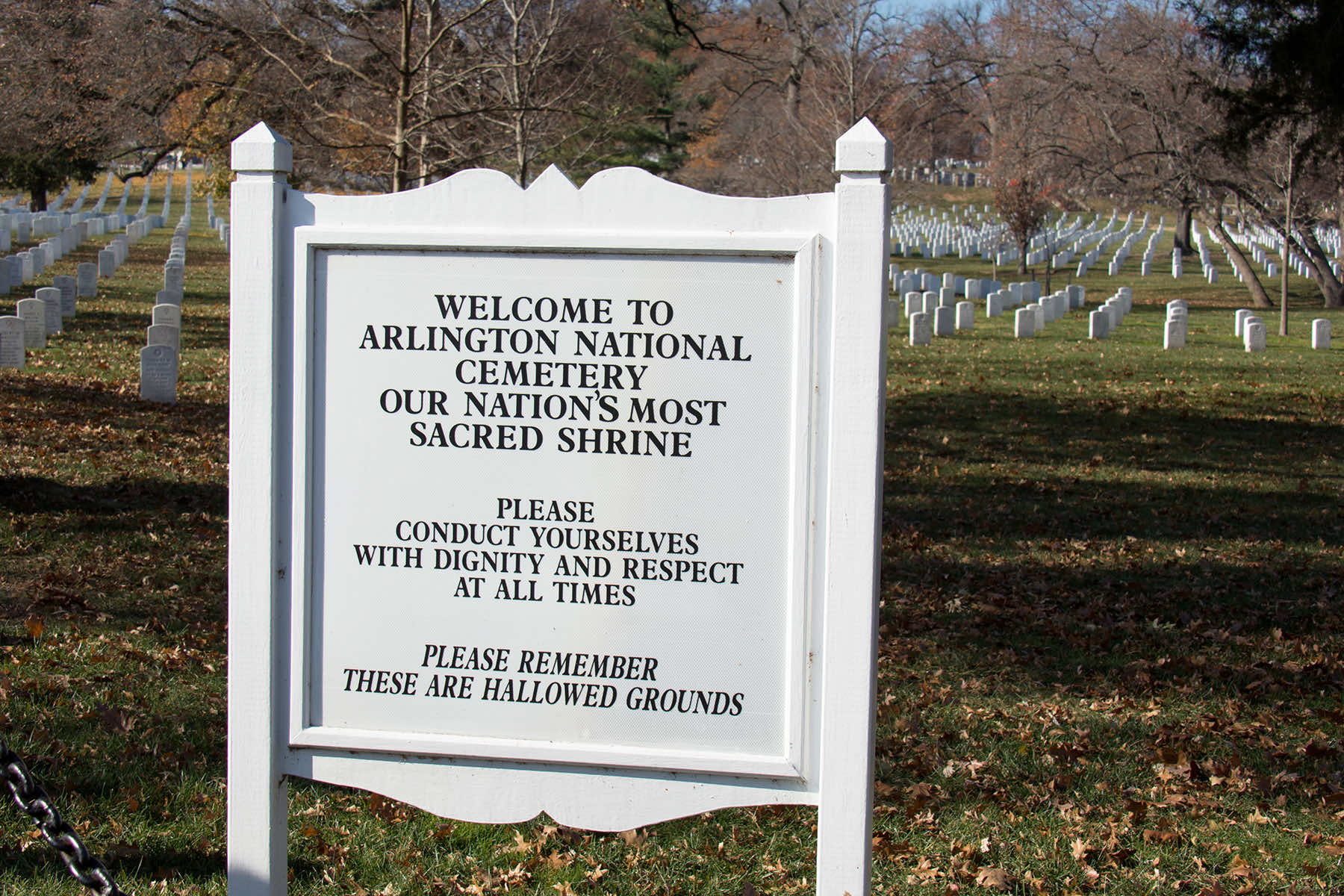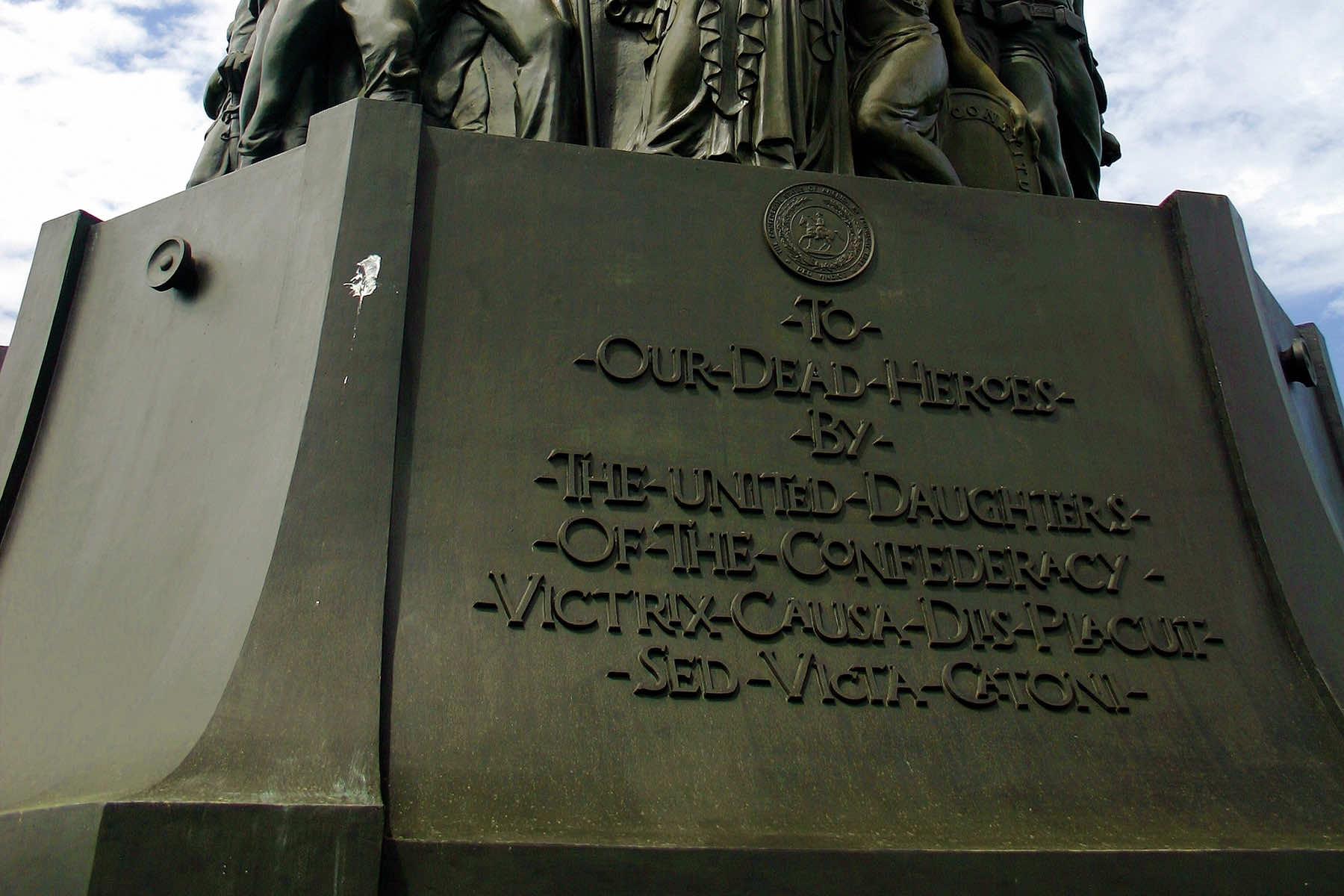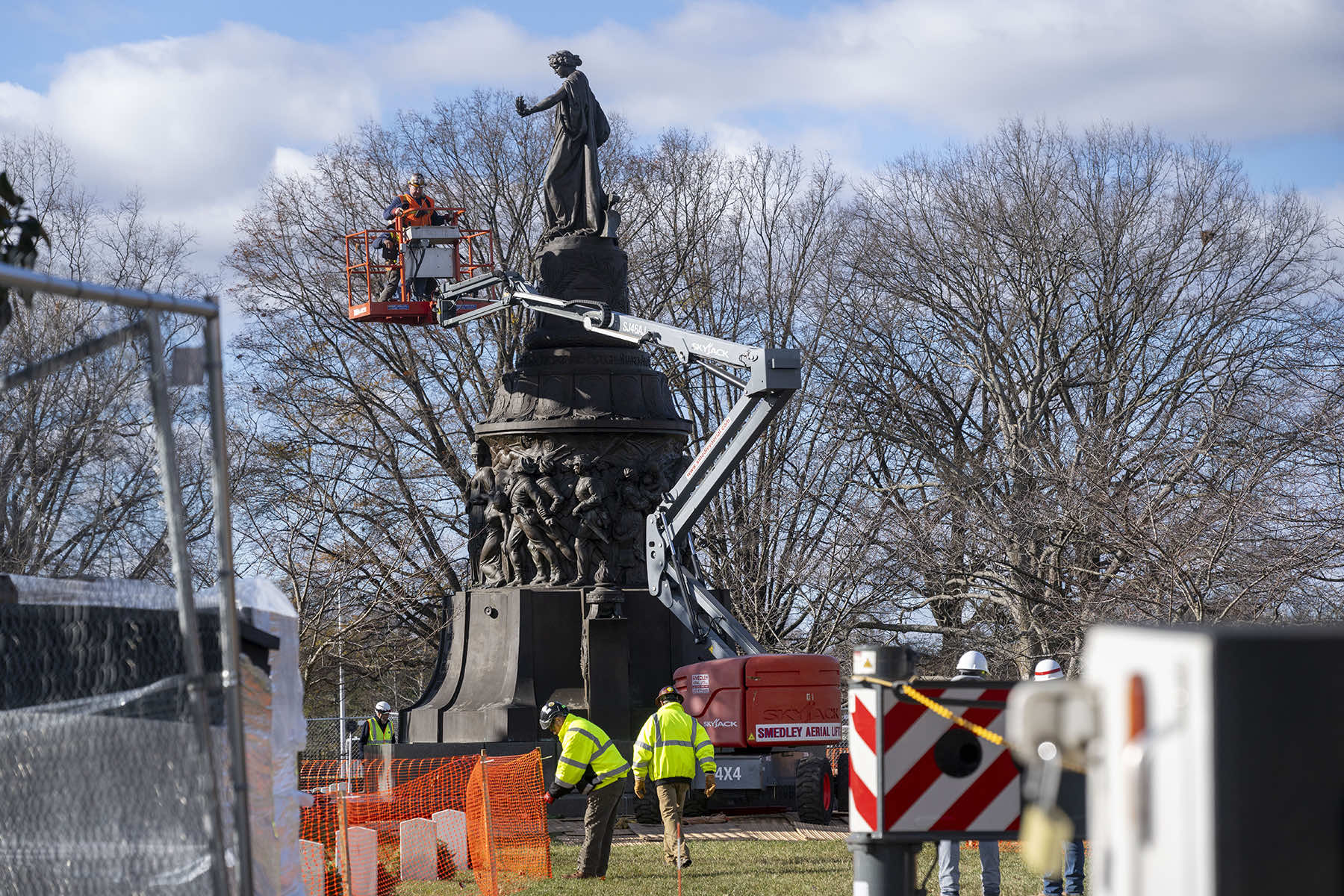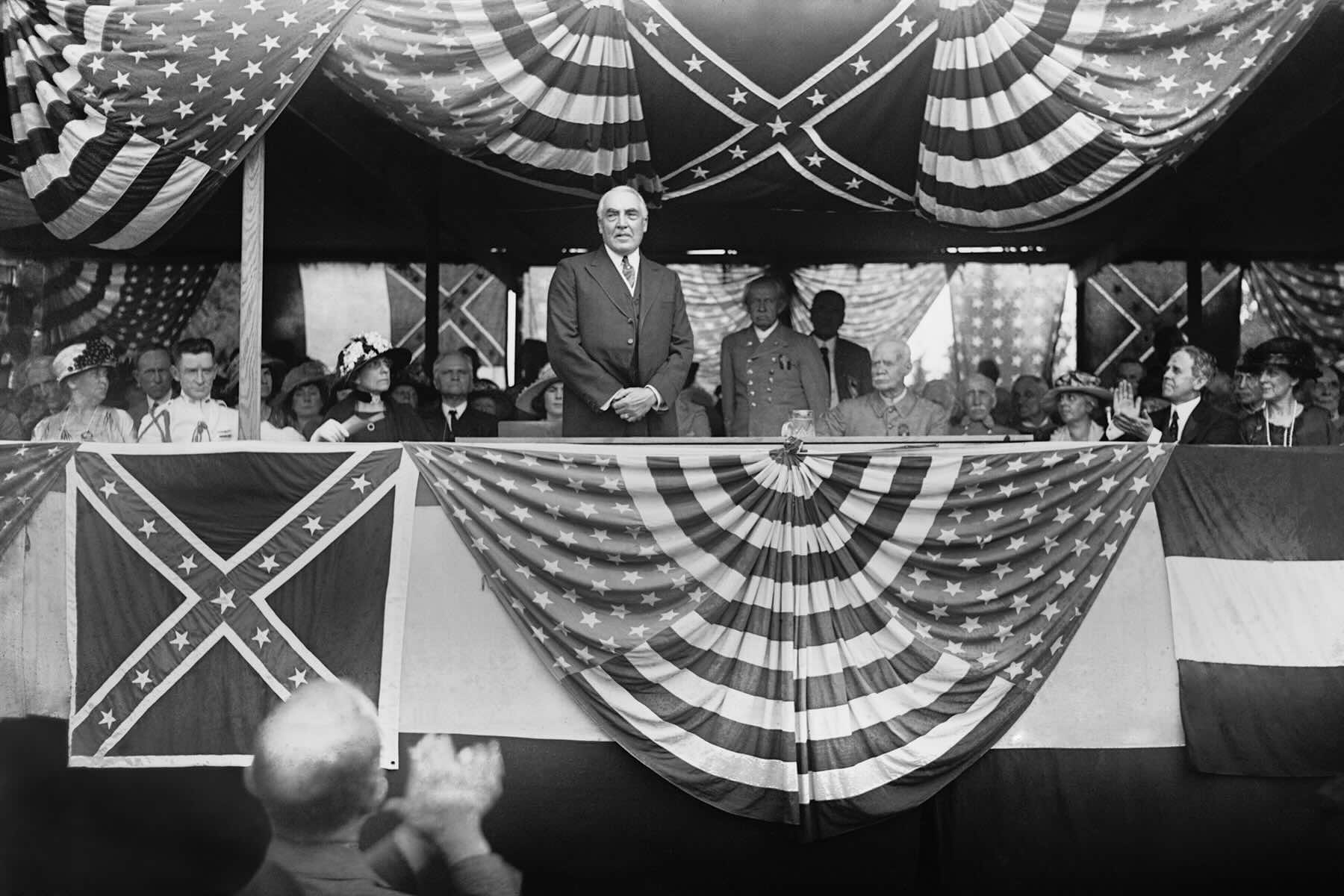
A Confederate memorial will be removed from Arlington National Cemetery in northern Virginia, part of the push to remove traumatic symbols that commemorate the Confederacy from military-related facilities.
The decision ignores a recent demand from more than 40 Republican congressmen that the Pentagon suspend efforts to dismantle and remove the monument that celebrated White Nationalism from Arlington cemetery.
Safety fencing was installed around the memorial, and officials anticipated completing the removal by December 22. But a federal judge on December 18 issued a temporary restraining order that halted its removal.
A lawsuit was filed on December 17 by Defend Arlington, a group affiliated with a reportedly White Nationalist organization called Save Southern Heritage, known as “a national network committed to keeping monuments to the pro-slavery South alive.”
On December 19, a federal judge in Alexandria, Virginia lifted the temporary restraining order, clearing the way for the Confederate memorial’s removal. In his ruling, the judge found that the group failed to show that it was in the public interest for the monument to stay, and that the claims that nearby graves were at risk of damage were “misinformed or misleading.”
As the removal process now continues, Arlington National Cemetery said that the surrounding landscape, graves, and headstones would be protected.
Virginia Governor Glenn Youngkin had disagreed with the decision and plans to move the monument to the New Market Battlefield State Historical Park in the Shenandoah Valley, Youngkin spokeswoman Macaulay Porter said.
In 2022, an independent commission recommended that the memorial be taken down, as part of its final report to Congress on the renaming of military bases and assets that commemorate the Confederacy.
The statue, unveiled in 1914, features a bronze woman, crowned with olive leaves, standing on a 32-foot pedestal, and was designed to represent a sanitized version of the American South. According to Arlington, the woman holds a laurel wreath, a plow stock and a pruning hook, with a Biblical inscription at her feet that says: “They have beat their swords into plough-shares and their spears into pruning hooks.”
Some of the figures also on the statue include a Black woman depicted as “Mammy” holding what is said to be the child of a White officer, and an enslaved man following his owner to war.
In a recent letter to Defense Secretary Lloyd Austin, a group of conservative House Republicans said the commission overstepped its authority when it recommended that the monument be removed.
The GOP congressmen ignored overwhelming public evidence to falsely contend that the monument “does not honor nor commemorate the Confederacy,” claiming instead in the whitewashed rhetoric of the “Myth of the Lost Cause” that the memorial commemorates reconciliation and national unity.
The Lost Cause movement, which recast a generation of rebel traitors as morally righteous warriors who defended states’ rights, was used to spread the false belief that slavery was benevolent. The memorial’s inscription directly references that idealized mythology, further highlighting the deliberate distortion of the Confederacy’s brutal history.
U.S. Representative Andrew Clyde, a Republican from the former Confederate state of Georgia, originally led the push to block the memorial’s removal.
A process to prepare for the memorial’s removal and relocation was completed, before the temporary injunction. The memorial’s bronze elements will be relocated, while the granite base and foundation will remain in place to avoid disturbing surrounding graves, it said.
Earlier this year, Fort Bragg shed its Confederate namesake to become Fort Liberty, part of the broad Department of Defense initiative, motivated by the 2020 George Floyd protests, to rename military installations that had been named after Confederate soldiers.
The North Carolina base was originally named in 1918 for General Braxton Bragg, a Confederate general from Warrenton, North Carolina, who was known for owning slaves and losing key Civil War battles that contributed to the Confederacy’s downfall.
The Black Lives Matter demonstrations that erupted nationwide after Floyd’s killing by a White police officer, coupled with ongoing efforts to remove Confederate monuments, turned the spotlight on the Army installations. The naming commission created by Congress visited the bases and met with members of the surrounding communities for input.

